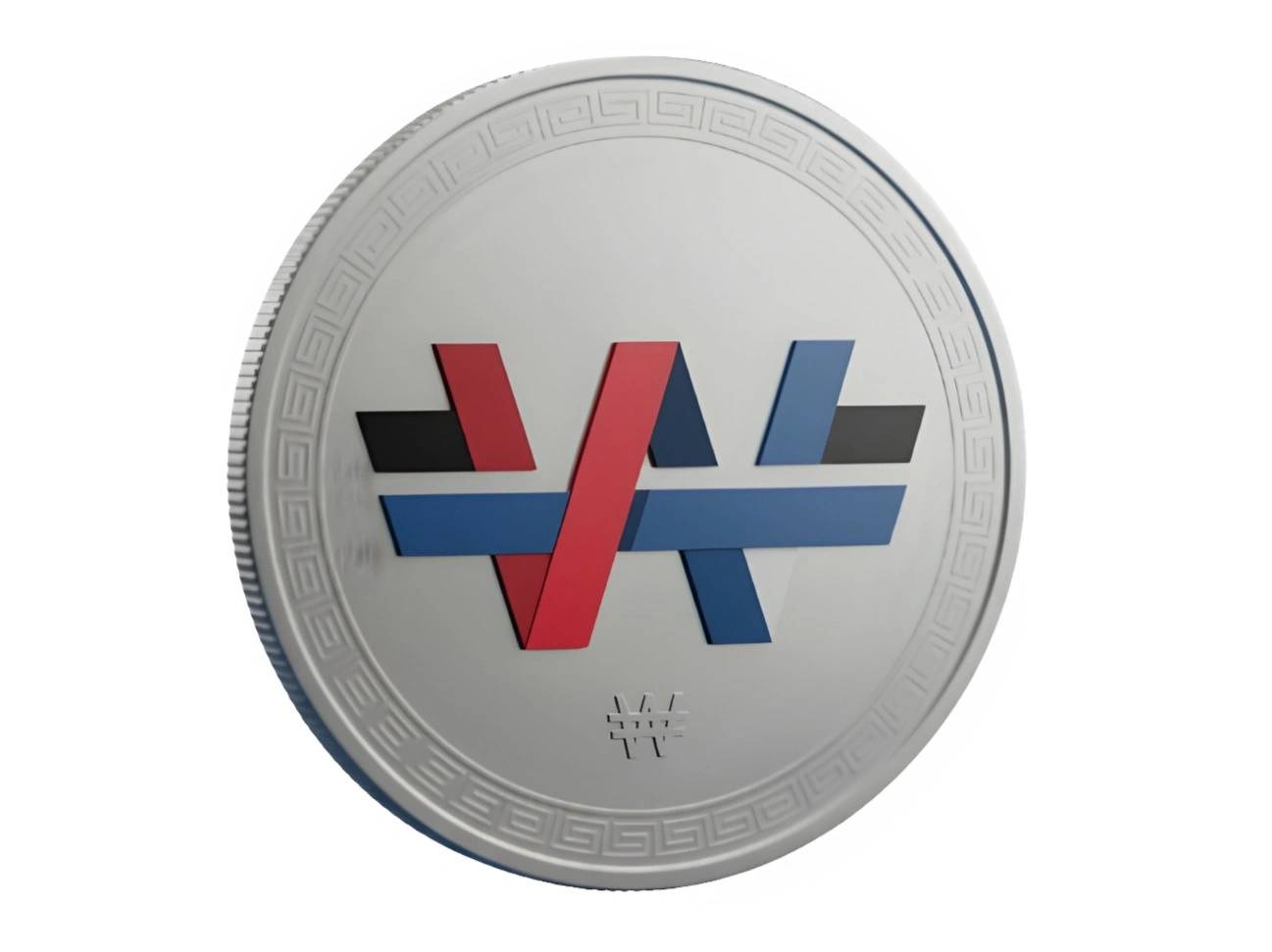KRWQ
KRWQ is a fully fiat backed stablecoin designed to maintain a 1:1 peg with the South Korean Won (KRW). Launched on October 30, 2025 by IQ and Frax Finance, it is the first Korean won-pegged tradeable stablecoin on the Base network and the first to utilize LayerZero's Omnichain Fungible Token (OFT) standard for native cross-chain functionality. [2] [3] [5]
KRWQ is the first KRW stablecoin available on the OKX platform.
Overview
KRWQ is a stablecoin pegged to the South Korean Won, launched in October 2025 through a partnership between IQ and Frax Finance. [2] [3] KRWQ was the first Korean won-pegged stablecoin to launch on Coinbase's Ethereum Layer 2 Base network. [2] [6]
The project was created to address inefficiencies in Korea's financial infrastructure, including a high reliance on USD for cross-border trade, and the lack of a regulator-friendly, won-denominated stablecoin for on-chain institutional use. [4] Navin Vethanayagam, co-founder of IQ AI, stated, "KRWQ fills a critical gap in the market. While USD-backed stablecoins dominate today, no credible won-denominated stablecoin has ever launched at scale." [5]
KRWQ is not a Central Bank Digital Currency (CBDC). The project's primary objective is to offer a transparent and efficient digital representation of the KRW that facilitates 24/7, low-cost transactions across multiple blockchain networks. The stablecoin is designed to be fully backed by KRW reserves. [1] [4] [5]
Technology
Multi-chain Architecture
To enhance accessibility, reduce transaction costs, and improve scalability, the project has adopted a multi-chain strategy, utilizing LayerZero's Omnichain Fungible Token (OFT) standard and the Stargate bridge to allow for transfers across different blockchains. [2] [3] By deploying on multiple blockchains, KRWQ allows users to transact on the network that best suits their needs regarding speed, cost, and security. [1] Bryan Pellegrino, Co-Founder and CEO of LayerZero Labs, commented on the launch, stating, "KRWQ is an important step toward a more connected global financial system. LayerZero's interoperability makes it possible for fiat-backed assets like the Korean won to exist natively across chains." [5]
The stablecoin is currently live on the following networks:
- Ethereum (Layer 1):
0xc00db6b41473d065027f5ed6fada20fde75f142e - Base (Layer 2):
0x370923D39f139C64813f173a1bf0b4f9Ba36a24f
The project has also announced plans to expand its presence to other Layer 2 scaling solutions to further improve transaction efficiency. Planned future deployments include:
This expansion onto Layer 2 networks is aimed at leveraging their lower gas fees and faster confirmation times compared to the Ethereum mainnet. [1]
Use Cases
KRWQ is designed for several primary applications that leverage its 24/7 availability and programmability. [4]
- Outbound Remittances: Facilitating instant, low-cost cross-border payments, initially targeting corridors from Korea to Southeast Asia, China, and Japan.
- Cross-Border B2B Settlement: Allowing Korean merchants to pay international suppliers in markets like China and Japan with T+0 settlement, reducing FX spreads and operational delays.
- Institutional On-Chain FX & Hedging: Providing 24/7 on-chain KRW liquidity for market makers and funds to hedge exposure without being constrained by traditional banking hours.
Roadmap
The development of KRWQ follows a clear, four-phase roadmap designed to build trust, scale liquidity, and achieve full integration with the domestic financial system. [4]
Phase 1 – Launch & Foundational Liquidity (Active)
This initial phase includes the deployment of the USDC-backed token on the Base network with transparent reserves and the establishment of the initial liquidity pool on the Aerodrome decentralized exchange.
Phase 2 – Attestation & Reserve Diversification (2025)
Scheduled for 2025, this phase involves appointing a qualified auditing firm to provide independent monthly attestations of reserves. It also marks the beginning of the transition of reserve assets to a portfolio of short-term Korean Treasury Bonds, Korean won money market securities, and Korean won held in segregated, bankruptcy-remote custody.
Phase 3 – Institutional Expansion (2026)
Planned for 2026, this phase is dedicated to deepening the Treasury Bill reserve backing, securing listings on additional exchanges, and integrating with remittance providers, Payment Service Providers (PSPs), and institutional Over-The-Counter (OTC) desks to scale utility and liquidity.
Phase 4 – Regulated Banking Integration (2026–2027)
The final phase involves partnering with regulated Korean banking institutions to enable direct, native KRW wire-in and wire-out for minting and redemption. This is intended to achieve the project's goal of creating a seamless, fully compliant bridge between the traditional Korean financial system and the global on-chain economy.
